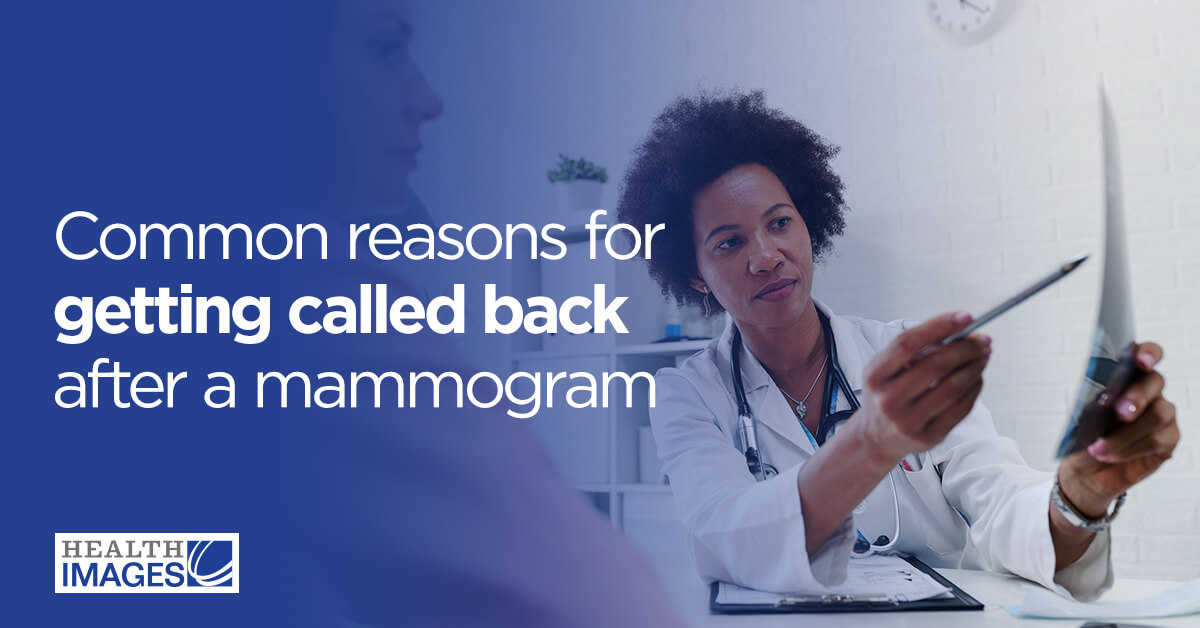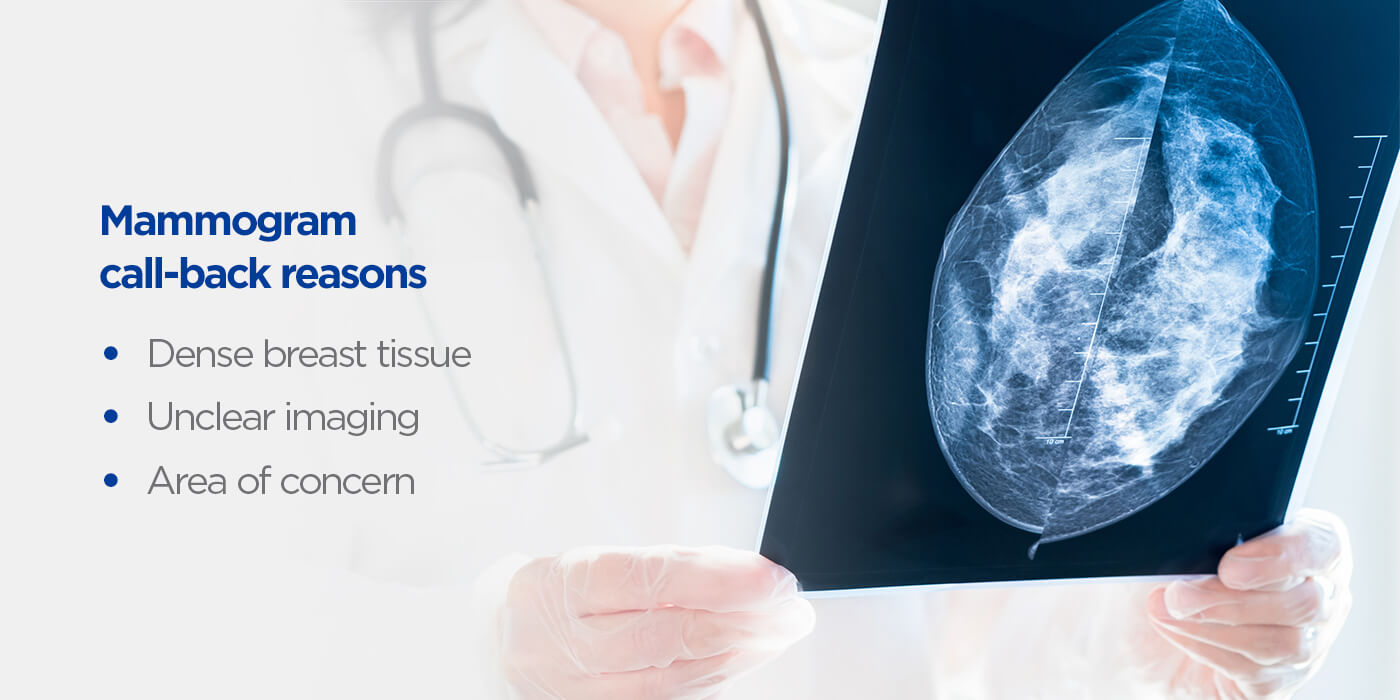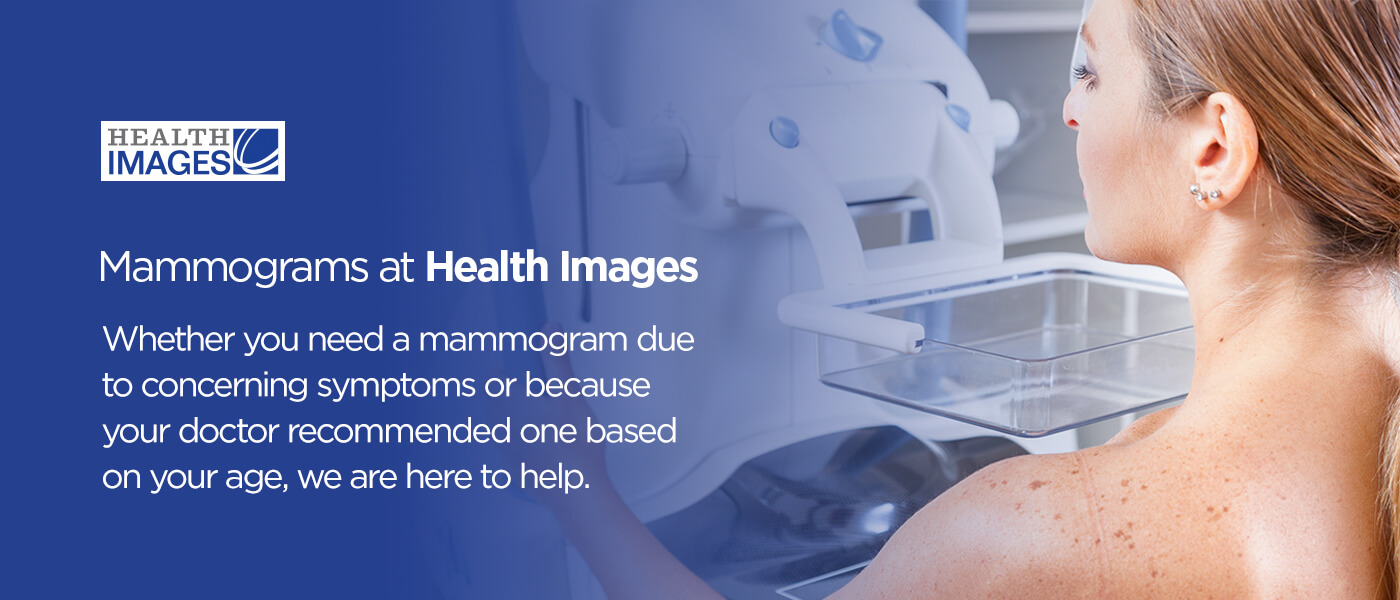Common reasons for getting called back after a mammogram
 Common reasons for getting called back after a mammogram
Common reasons for getting called back after a mammogram
Screening for breast cancer is an essential part of health care for all women, and mammograms are a crucial imaging tool in this screening process. If you receive a call back after a mammogram, you may become immediately concerned that you will receive a breast cancer screening diagnosis. However, that is rarely the case. Fewer than 10% of women called back for additional testing have breast cancer.
What are some of the typical reasons to get called back after a screening mammogram, and what can you expect after that?
Jump Ahead:
Mammogram screening guidelines
Why are you undergoing a mammogram? Perhaps your doctor has found an area during a breast exam that warrants closer scrutiny via imaging test. Or, you may belong to a recommended age group. The United States Preventive Services Task Force suggests that women between 50 and 74 years old and at average risk for breast cancer schedule a screening mammogram every two years.
Many health organizations have breast cancer screening guidelines, including the American Cancer Society, American College of Physicians, American College of Obstetricians and Gynecologists and more. When determining when to schedule your first mammogram, talk to your doctor about your health history, potential risk factors and any current symptoms you are experiencing.
The mammogram process
How does a mammogram work? A mammogram is a type of x-ray specifically designed to take images of breast tissue. In some cases, this health screening can detect cancer in patients up to three years before they feel any signs of it.
So the machine can capture images of your breasts, you will stand in front of it while a technologist places one breast at a time on a plate. Another plate above the breast will briefly press down while a machine takes a series of images. The technologist will then repeat the test with your other breast. Mammograms can be uncomfortable, or even painful, for some women, but the exam is brief.
After your mammogram, a radiologist will look at the images to determine the next steps, if any.
Mammogram call-back reasons
If you have undergone a mammogram, your imaging office may call you back for a breast ultrasound or other additional testing. Approximately 10 to 12% of women in the United States will need further testing following a mammogram. What are some of the common reasons for a mammogram results call back?
- Dense breast tissue: Dense breast tissue is prevalent among women, but what does this mean? The breast consists of different elements, including glandular tissue, fibrous tissue and ducts. Glandular tissue is the part of the breast responsible for producing milk, while ducts carry the milk to the nipple. Fibrous breast tissue and fat give breasts their shape. When someone has more fibrous or glandular tissue, doctors consider their breasts dense. Dense breast tissue can make it more challenging to read mammograms. If a radiologist has difficulty reading your mammogram due to dense breasts, they may call you back to undergo further testing, such as an ultrasound or an MRI.
- Unclear imaging: During your mammogram, the technician will take multiple images of your breasts, but these pictures may be unclear or did not capture all areas of the breast tissue. If this happens, your doctor may call you back to redo the mammogram to ensure the radiologist can get a complete and accurate reading.
- Area of concern: A mammogram may capture an area of concern your doctor will want to take a closer look at, which could be a cyst, calcification or a mass. Just because there is something potentially concerning on your mammogram does not automatically mean you have breast cancer. Further imaging will help your doctor determine what is the best course of action to follow next.
Imaging may also show an area of the breast that looks different than the rest, which isn’t necessarily concerning, but warrants further investigation. This phenomenon may be more likely for first-time mammogram patients, since the radiologist does not have any past breast imaging for comparison.
What happens next?
So, you get the message that you need to come back after your mammogram. What can you expect?
- Diagnostic mammogram: If you need to repeat your mammogram, you will undergo a test, known as a diagnostic mammogram, to take images of any areas of particular concern. The radiologist who will later interpret the imaging may be present at the appointment to give the technician instructions on the exact images needed. The mammogram may take longer this time because it might require more pictures from several angles.
- Ultrasound: An ultrasound is a different type of imaging test. This test, which uses soundwaves to produce images, might allow your health care team to differentiate between a non-cancerous cyst and a potentially cancerous mass. A breast ultrasound, like a mammogram, is a noninvasive test.
- MRI: Some women considered at high risk for breast cancer will undergo a yearly breast MRI along with a mammogram. If you get called back after your initial mammogram, this test — which uses magnets to create images of the breasts — may help clarify your mammogram findings. Generally, health professionals don’t use a breast MRI as a screening tool for women at average risk of developing breast cancer.
- Biopsy: If your mammogram reveals something suspicious, your doctor may determine a biopsy is necessary. During this procedure, your doctor will use a thin needle to collect samples of the area of concern. They’ll send the tissue samples to a lab for a pathologist to analyze. Your doctor will call you with the biopsy results and discuss what happens next.
Mammograms at Health Images
Regular mammograms can be lifesaving. This screening test can catch breast cancer earlier in its course of development, helping you get the treatment you need as quickly as possible. Whether you need a mammogram due to concerning symptoms or because your doctor recommended one based on your age, we are here to help provide you with your mammogram results.
We offer mammography through our Health Images centers in and around Denver, Colorado. Look at our locations and talk to your doctor about requesting your mammogram.
Call To Schedule Your Appointment
Linked sources:
- https://www.cancer.org/cancer/breast-cancer/screening-tests-and-early-detection/mammograms/getting-called-back-after-a-mammogram.html
- https://www.cdc.gov/cancer/breast/basic_info/screening.htm
- https://www.cdc.gov/cancer/breast/basic_info/mammograms.htm
- https://knowyourgirls.org/resources/everything-you-should-know-if-you-need-a-follow-up-test/
- https://www.cancer.org/cancer/breast-cancer/screening-tests-and-early-detection/breast-mri-scans.html
- https://www.healthimages.com/services/mammography/
- https://www.healthimages.com/locations/
Unlinked sources:
- https://www.cdc.gov/cancer/breast/pdf/breast-cancer-screening-guidelines-508.pdf
- https://www.cdc.gov/cancer/breast/basic_info/mammograms.htm
- https://www.cancer.org/cancer/breast-cancer/screening-tests-and-early-detection/mammograms/breast-density-and-your-mammogram-report.html
- https://www.nationalbreastcancer.org/diagnostic-mammogram
- https://www.mayoclinic.org/tests-procedures/breast-biopsy/about/pac-20384812





